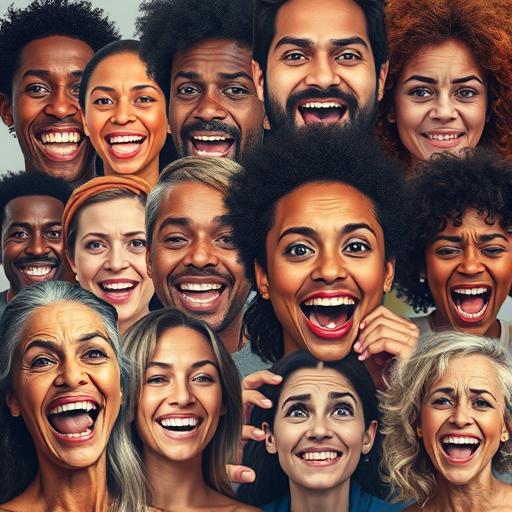Unspoken Power: The Truth Behind Facial Expressions

Unspoken Power: The Truth Behind Facial Expressions
Unspoken Power: The Truth Behind Facial Expressions
The Language of the Face: Understanding Facial Expressions
Facial expressions are a vital part of nonverbal communication, providing insights far beyond what is spoken. They are a window into our emotional landscape, conveying feelings such as joy, sadness, anger, frustration, and empathy. Psychologists estimate that nearly 90% of communication is non-verbal, with facial expressions playing a crucial role. A simple smile can convey warmth and friendliness, while a frown may signal disapproval or concern. Our faces tell our internal stories, whether we’re aware of it or not.
Understanding the nuances of these expressions can empower you in various aspects of life—be it in personal relationships, professional settings, or public interactions. The ability to read facial cues accurately allows you to connect better with others, fostering deeper relationships and enhancing your empathy. When you learn to interpret these signals correctly, you become adept at navigating complex social interactions. Just as our facial expressions can provide insight into others’ emotions, they also influence how others perceive us. A warm smile can create a sense of approachability, while a furrowed brow may convey stress or impatience.

The Power of a Smile: Transforming Interactions 🔥
A smile is not just a facial movement; it is a powerful tool that can transform interactions. The psychological effects of a smile are profound. Research shows that smiling releases endorphins, often referred to as “feel-good” hormones, which can enhance your mood and that of those around you. Smiling not only boosts your emotional state but also encourages others to smile in return, creating a ripple effect of positivity.
In professional settings, a genuine smile fosters trust and signifies approachability. It can break down barriers between colleagues and clients, making it easier to collaborate and share ideas. For instance, during a job interview, a candidate who smiles genuinely may appear more confident and likable—traits desirable to potential employers. Furthermore, smiling can elevate the tone of conversations, diffusing tension and paving the way for collaborative problem-solving.

“The most beautiful curve on a woman’s body is her smile.” — Bob Marley 🌟

Decoding Facial Expressions: The Emotions They Convey
Facial expressions are universally understood, with several core emotions transcending cultural boundaries. The six basic emotions universally recognized are happiness, sadness, fear, anger, surprise, and disgust. Each of these emotions correlates with distinct facial expressions that can be deciphered with practice.
For example, when someone is happy, they often exhibit a lifted mouth and crinkled eyes. In contrast, sadness is marked by downturned lips and a furrowed brow. Recognizing these cues can significantly improve your emotional intelligence. The more adept you become at interpreting these signals, the more proficient you will be at responding appropriately to others' emotions—leading to better interpersonal relationships.

The Impact of Cultural Differences on Facial Expressions
While many facial expressions are universally recognized, cultural contexts can significantly influence how these expressions are interpreted and exhibited. In some cultures, impassivity when faced with stress is common, while in others, explicit emotional expressions are encouraged. Understanding these cultural subtleties is crucial for effective cross-cultural communication.
For instance, in many Western cultures, maintaining eye contact is seen as a sign of confidence and honesty. However, in some Asian cultures, excessive eye contact can be viewed as disrespectful or confrontational. Similarly, a smile may be warm in one context and may carry layers of meaning—including embarrassment or nervousness—in another.

How-To Harness Facial Expressions Effectively 🚀
- Practice regular self-reflection to recognize your own emotional expressions.
- Observe the facial expressions of others in various situations for better understanding.
- Incorporate more smiles into your daily interactions to emulate positivity.
- Educate yourself about cultural differences regarding facial expressions.
- Engage in active listening to improve your emotional intelligence and response to others.
Ready to Master Your Nonverbal Communication? 💪🎯
Unlock the full potential of your facial expressions and transform your connections today. 🚀
Conclusion
Harnessing the unspoken power of facial expressions can revolutionize the way you connect with others. By understanding and mastering the nuances of nonverbal communication, you open the doors to enhanced relationships in every realm of your life. Remember that your expressions are not just reactions; they are invitations to deeper connections and authentic interactions. Begin today to cultivate the art of expression, and watch as your world transforms into a landscape of understanding, trust, and joy. Your facial expressions hold influence and power—align them with your intentions, and harness their real potential. Embrace this journey, and let your face tell a story of positivity, empathy, and connection. 🌟
